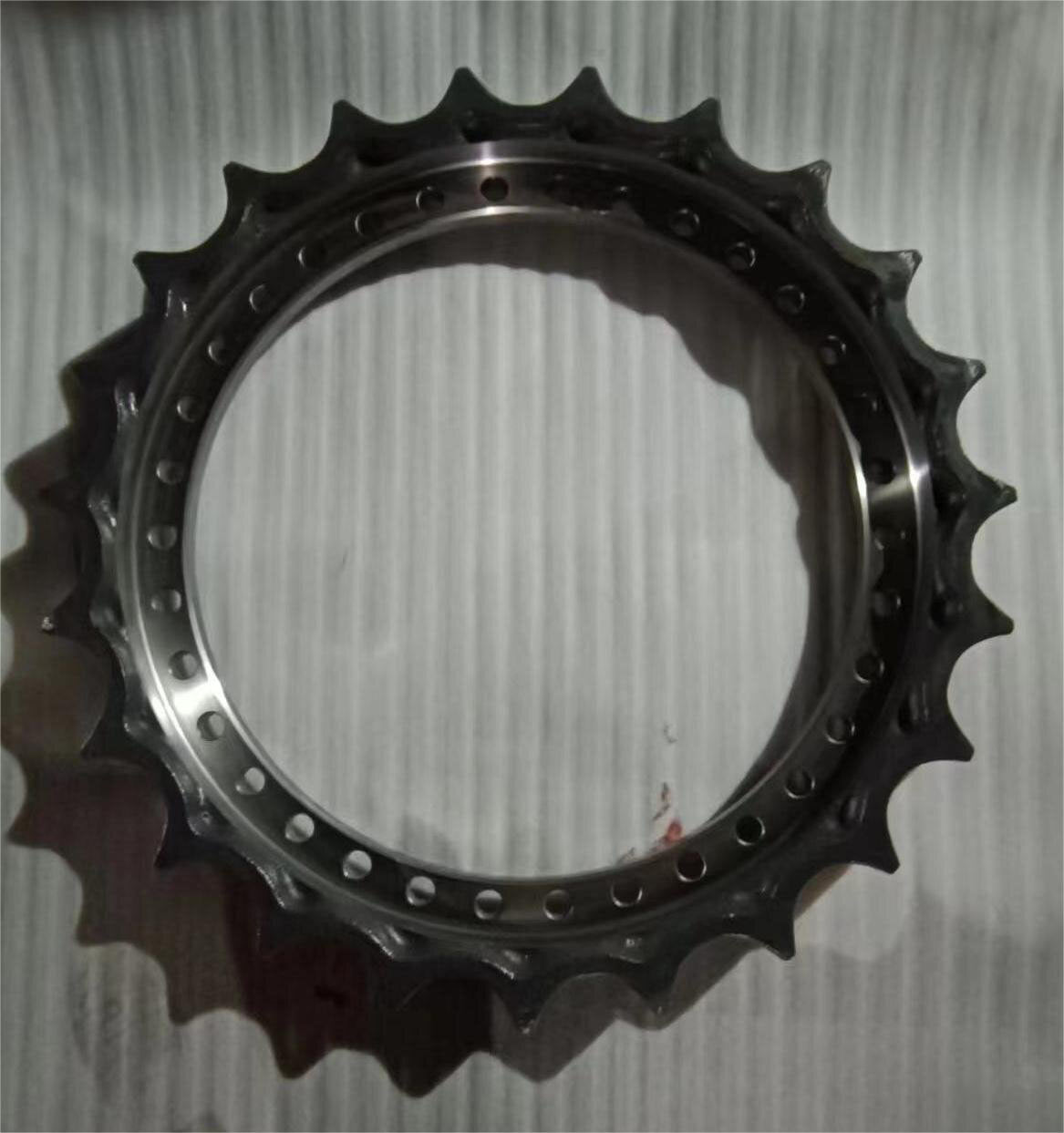How Can You Recognise The Wear Patterns of Sprockets and Segments
Sprockets and segments should always run in line with the chain's pitch. If the sprocket or segment is worn, the points of the gear ring will become sharp. This is because there is play between the pins and the bushings. Another common wear pattern for sprockets and segments is the lateral wear. This is caused by (among others) worn chain guides, a twisted undercarriage, or poor guiding of the front wheel. It can also be caused by the filtration of hard materials between the bushings and the cogwheel, or by incorrect alignment. To limit wear from the infiltration of soil (packing), we make sand notches in our sprockets.
Sometimes the machine’s sprockets or segments are sharp, but the track links appear to be in reasonable condition. We are frequently asked whether the sprockets still need to be changed. The only reason why a sprocket becomes sharp is through the chain’s increased pitch. An increase in pitch creates more play between the pin and the bushing. As a result, the chain’s bushing no longer runs in line with the hollow part of the sprocket. This causes wear on the sprockets and the points become sharp. So never only replace a sprocket. If a track drive sprocket from an excavator with dry chains needs to be replaced, then the track links should always be replaced as well, and vice versa.
Because bulldozers carry out a lot of mobile work, they need oil lubricated chains in combination with segments. The wear of the segments is usually found in the cup between the segment points. The pitch can only increase when the oil lubricated chain leaks, and the points of the segments will then become sharp. If the oil lubricated chain does not leak, then it is better to replace the segments before the end of the cycle; that way the undercarriage can be used for a few hundred more hours.





